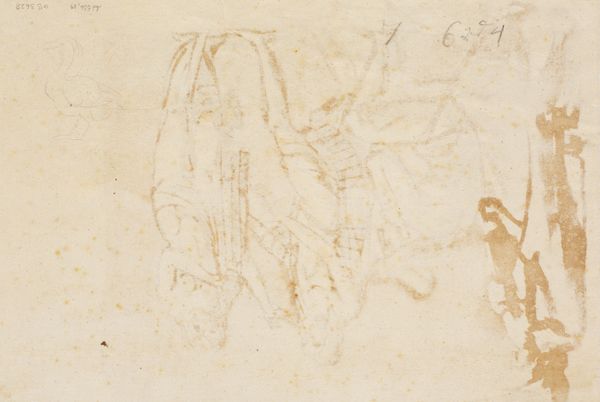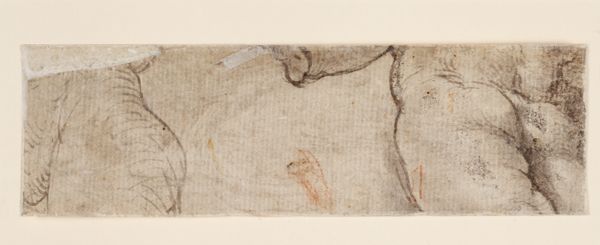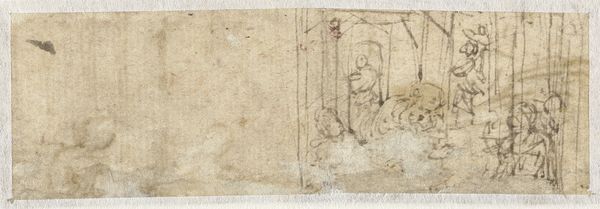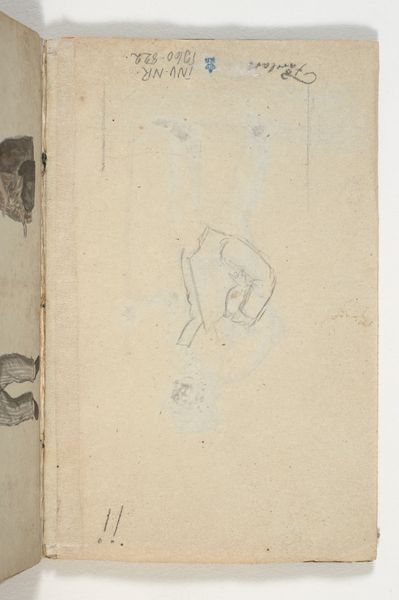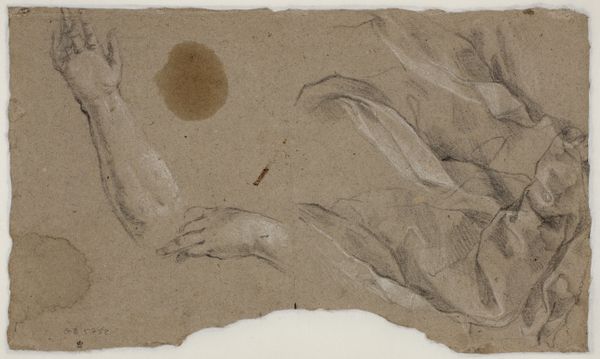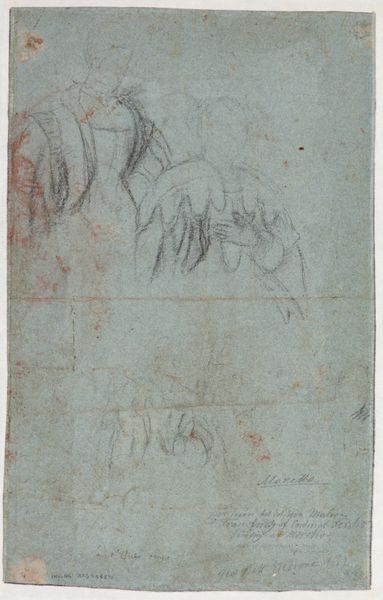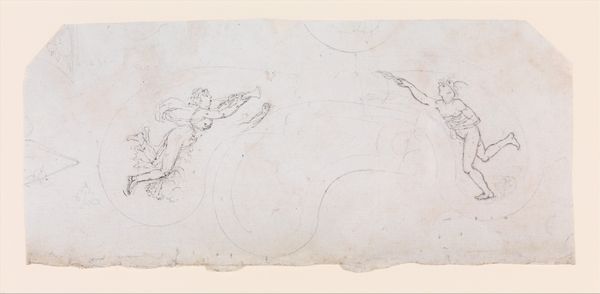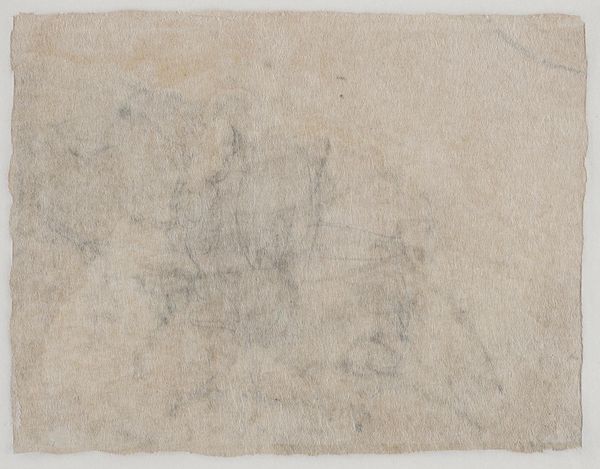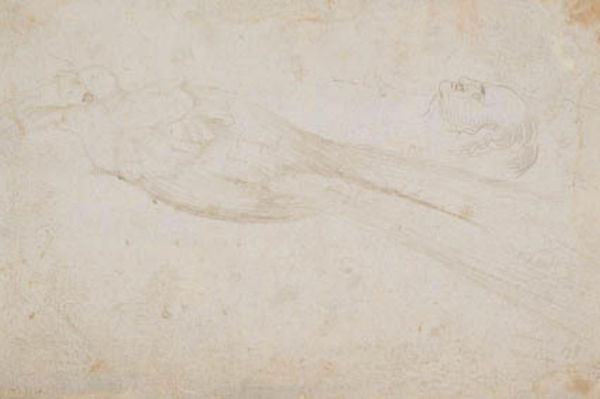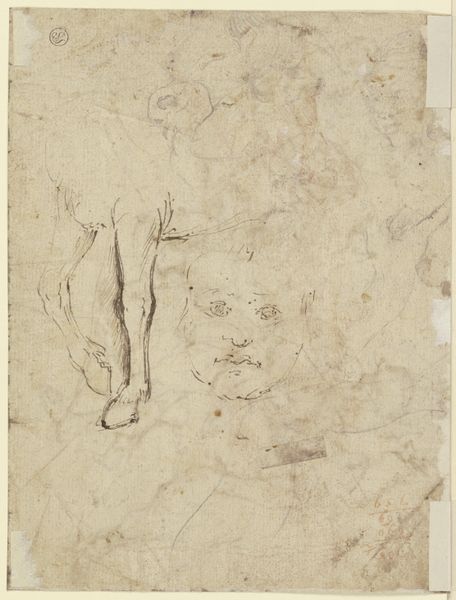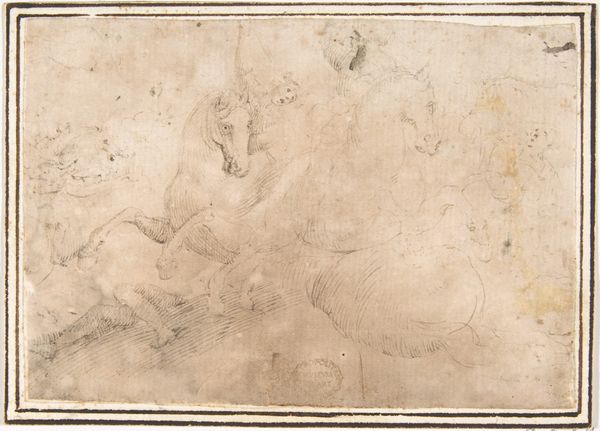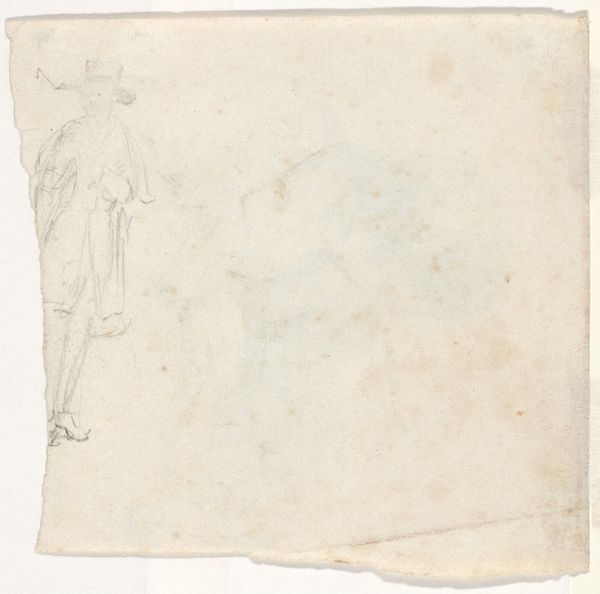
drawing, paper
#
portrait
#
drawing
#
baroque
#
figuration
#
paper
#
line
Copyright: Public Domain
Claude Lorrain made this drawing of a striding pair of legs with red chalk, but we don't know exactly when. Lorrain was working in Rome in the 17th century, and he was celebrated for his idealised landscapes. This study of legs offers a glimpse into the artistic process of the time. Artists like Lorrain would have spent hours studying the human form, drawing from life or copying antique sculptures, as part of their training. The drawing would allow artists to understand the mechanics of the body and the movement of muscles. The institutions of art, such as the French Academy in Rome, placed great emphasis on mastering the human form as a foundation for history painting. Historical sources like letters and inventories, together with the artist's drawings can reveal much about the way art was taught and made in the 17th century.
Comments
stadelmuseum about 2 years ago
⋮
The light pentimenti on the figures of the dancing girl and the sitting bagpipe player indicate that this is in preparation for a composition. The dancer appears again, slightly modified, in two almost identical paintings, “The Marriage of Isaac and Rebecca” (National Gallery, London), dated 1648, and “The Mill” (Galleria Doria Pamphili, Rome) from the same year (MRP 113). Her Greek chiton reveals that she is not a contemporary dancer. The sitting musician does not appear in the two paintings and was probably discarded before the composition was finalised. A bagpipe player can be found in several earlier variations of the rural dance theme on which the painting of 1648 is based. In accordance with Claude’s practice, the animals and landscape must have been added later to make this sketch an independent composition completed with brown wash. The thin lines in red chalk, which are largely concealed by the dancer, could be preparatory strokes for an academic figure study. On the back of the sheet the legs of another academic study are still visible.
Join the conversation
Join millions of artists and users on Artera today and experience the ultimate creative platform.
